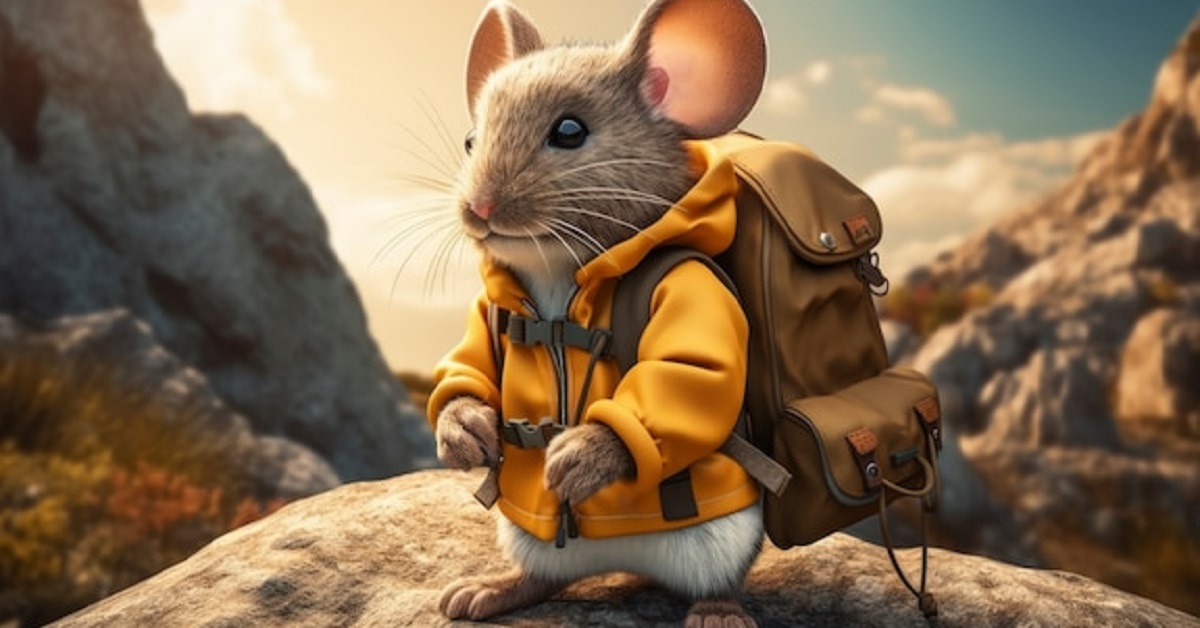The Intriguing World of Mice: Nature’s Tiny Marvels
Introduction
Mice, those tiny creatures scurrying in shadows, play a surprisingly significant role in our world. From their vital ecological contributions to their impact on human life, understanding mice can reveal much about nature and ourselves. Let’s delve into the captivating world of mice, exploring their biology, behavior, and the myriad ways they intersect with human life.
The Biological Profile of Mice
Physical Characteristics
Mice are small rodents with pointed noses, rounded ears, and long, scaly tails. Typically, they range from 5 to 7 inches in length, including their tails, and weigh between 0.5 to 1 ounce. Their fur can vary in color from white to brown to black, depending on the species and environment.
Species Diversity
There are over 1,100 species of mice across the globe. The house mouse (Mus musculus) is the most common and well-known species, thriving in close proximity to humans. Other notable species include the deer mouse (Peromyscus maniculatus) and the field mouse (Apodemus sylvaticus).
Lifespan and Reproduction
Mice have a relatively short lifespan, typically living up to two years in the wild. In captivity, with proper care, they can live up to three years. They reproduce rapidly, with females capable of having up to ten litters per year, each consisting of 3-14 pups.
Habitat and Distribution
Natural Habitats
Mice are incredibly adaptable and can be found in diverse habitats ranging from forests and grasslands to urban areas. They prefer environments where they can easily find food and shelter.
Urban and Rural Distribution
In urban settings, mice often inhabit homes, warehouses, and farms, while in rural areas, they are commonly found in fields, hedgerows, and woodland edges. Their ability to thrive in varied environments makes them one of the most widespread mammals.
Adaptability to Various Environments
Mice are highly adaptable, capable of surviving in extreme conditions. Their ability to find food, build nests, and reproduce quickly allows them to thrive in both natural and human-made environments.
Diet and Nutrition
Natural Diet
Mice are omnivorous and have a varied diet. In the wild, they consume seeds, fruits, grains, and insects. Their diet can vary significantly based on availability and habitat.
Dietary Needs in Captivity
In captivity, mice should be provided with a balanced diet that mimics their natural food sources. Commercial mouse pellets, supplemented with fresh fruits and vegetables, ensure they receive the necessary nutrients.
Foraging Behavior
Mice are natural foragers, constantly exploring their environment for food. They are known to hoard food, storing it in their nests for times of scarcity.
Behavioral Patterns
Social Structure
Mice are social animals that live in groups. Their social structure is complex, with dominant and subordinate individuals. They communicate through a combination of vocalizations, scent markings, and body language.
Communication Methods
Mice use high-pitched squeaks, which are often inaudible to humans, to communicate. They also rely heavily on their sense of smell to convey information about territory, reproductive status, and individual identity.
Daily and Seasonal Activities
Mice are primarily nocturnal, meaning they are most active at night. Their activities can vary seasonally, with increased nesting and hoarding behavior in preparation for colder months.
Mice in the Ecosystem
Role in the Food Chain
Mice are a crucial part of the food chain, serving as prey for a variety of predators including birds of prey, snakes, and mammals. Their presence supports the survival of these species.
Interaction with Other Species
Mice interact with numerous species, both as prey and as competitors for food resources. They can also act as hosts for parasites, influencing the health of other animals.
Environmental Impact
Mice play a significant role in seed dispersion and soil aeration through their foraging and burrowing activities. However, in large numbers, they can also cause damage to crops and stored food.
Mice and Humans
Historical Relationship
Humans and mice have a long-standing relationship, with mice often seen as pests. However, they have also been kept as pets and used extensively in scientific research.
Mice in Research
Mice are invaluable in research due to their genetic similarity to humans. They are used in studies ranging from genetics to behavioral science, contributing to significant medical advancements.
Common Misconceptions
Many people see mice solely as pests, but they are complex creatures with important roles in ecosystems and scientific research. Understanding their behavior and biology can lead to more humane treatment and effective control measures.
Mice as Pets
Choosing the Right Breed
If you’re considering a mouse as a pet, it’s essential to choose the right breed. Fancy mice, which come in various colors and coat types, are popular choices due to their docile nature and aesthetic appeal.
Housing and Care Requirements
Mice need spacious cages with plenty of enrichment activities like tunnels and wheels. Their housing should be kept clean to prevent health issues, and they should be given opportunities for social interaction and mental stimulation.
Health Considerations
Regular veterinary check-ups are crucial for pet mice. Common health issues include respiratory infections and dental problems. A balanced diet and a clean environment are vital for preventing illnesses.
Common Diseases and Health Issues
Common Ailments
Mice are prone to several health issues, such as respiratory infections, mites, and tumors. Respiratory problems are particularly common due to their sensitive respiratory systems.
Preventive Measures
Maintaining a clean living environment, providing a balanced diet, and ensuring minimal stress can help prevent many common health issues in mice.
Veterinary Care
Finding a veterinarian experienced with small mammals is important for diagnosing and treating illnesses in mice. Regular check-ups can help catch health problems early.
Mice in Popular Culture
Symbolism and Mythology
In various cultures, mice symbolize different traits such as cleverness, resourcefulness, and fertility. They appear in numerous myths and stories across the world.
Mice in Literature and Media
Mice are beloved characters in literature and media, from Beatrix Potter’s “The Tale of Despereaux” to Disney’s iconic Mickey Mouse. They often represent innocence and perseverance.
Famous Mice in History
Notable mice include laboratory pioneers like the famous “C57BL/6” mouse strain used in genetic research, contributing to numerous scientific breakthroughs.
Mice Control and Management
Preventing Infestations
Preventing mice infestations involves sealing entry points, keeping food sources secure, and maintaining cleanliness. Regular inspections can help detect signs of mice early.
Humane Control Methods
Humane control methods, such as live traps and relocation, are preferable to lethal methods. Ultrasonic devices can also deter mice without harming them.
Professional Pest Control
For severe infestations, professional pest control services may be necessary. They can provide effective and humane solutions tailored to specific situations.
Interesting Facts About Mice
Unique Abilities
Mice have remarkable abilities, including a strong sense of smell and hearing. They can also jump up to 18 inches in the air and squeeze through tiny openings.
Surprising Behaviors
Mice are known for their curiosity and intelligence. They can navigate complex mazes and remember routes, demonstrating significant cognitive abilities.
Record-Breaking Mice
The longest-lived mouse on record lived to be nearly 5 years old, and the heaviest mouse weighed over 1.5 ounces, showcasing the diverse potential of these small creatures.
The Future of Mice
Conservation Efforts
While common species thrive, some wild mouse species are endangered due to habitat loss and environmental changes. Conservation efforts aim to protect these vulnerable species.
Impact of Climate Change
Climate change affects mice populations by altering their habitats and food sources. Researchers study these impacts to understand broader ecological changes.
Genetic Research
Advances in genetic research continue to benefit from mouse models. Their genetic similarity to humans makes them essential for studying diseases and developing treatments.
Conclusion
Mice are fascinating creatures with complex behaviors and significant ecological roles. Whether viewed as pets, research subjects, or wildlife, they offer invaluable insights into the natural world and human society. By understanding and appreciating mice, we can foster a more harmonious coexistence with these tiny marvels.


